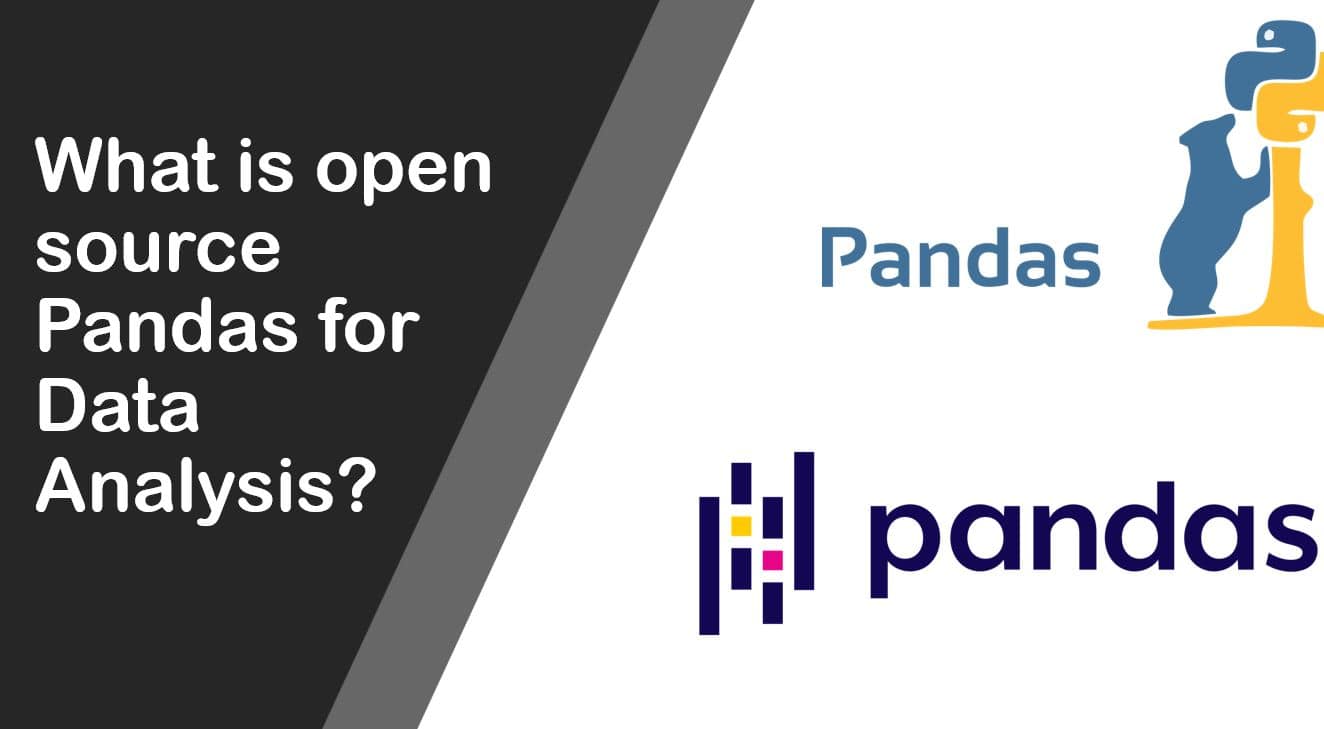Over the years there have been many developments in the technologies related to the IT field. People have found different ways of storing data in a much more efficient and quicker way. As a company especially IT based, it is essential to manage the databases and store them in a place that is least accessible by outsiders. Well, here comes the role of a Data Analyst; he/she helps in managing huge amounts of data and generating meaningful inferences from the same. Being a data analyst needs attentiveness and a desire to explore new ways of managing the databases and this is how this amazing library took birth to help the data analyzing community. The name of this library is Pandas – Python Data Analysis Library.
Pandas is an open-source data analysis tool that is a library we can install using the Python on our system. The Pandas library contains amazing features that help data analysts overcome the problems of loading data and carry out statistical analysis. Yes, you heard right it’s Pandas. Don’t go by its name as it may look funny. The power of this data analyzing tool is crossing all hindrances that appear in analyzing databases.
Some key things we can perform with the help open-source data analysis tool Pandas:
- Loading the dataset in the Python environment: With the help of Pandas, we can load different kinds of data with different extensions like .csv, .xlsx, .xls. A relational database, a non-relational database, and many more. With just one line of code, we can import all sorts of data into the system and can play around with the same
- Reading from the web: With the help of this library, we can read any kind of data from the web provided there are tables inside the webpage. We can read HTML tables and JSON files as well with this library.
- One Hot Encoding: With the help of pandas we can do feature engineering as well for machine learning. We can create dummy variables which are also called a one-hot encoded variable for our categorical features and help in building our train and test model.
- Removing Columns and Rows from data: With the help of Pandas one can removing particular columns and rows from the dataset which he/she feels are unnecessary.
- Inserting a new column at a specific location: Inserting certain columns that can add value to our data can be done with the help of Pandas. The syntax is very simple and easily understood by developers and data scientists.
- Create a new column and then move it: We can create new columns with totally different metadata contained inside the same and can use it for data manipulation and machine learning activities.
- Filtering rows by condition: Filtering rows and columns that we want from the data can also be performed with Pandas. This is helpful especially when we want to see the fluctuations of one feature with others and how it is creating an impact on other features of the dataset.
- Querying specific values from data: Querying is similar to filtering a set of features from the data set the only difference that is there is a difference in syntax. Filtering and querying options are an essential part of data analysis.
- Concatenating different data: To concatenate means to join two different data that are either completely different from each other or possess some type of semantic relation between them. With the help of Pandas concatenating two or more data frames can also be done with much easiness than other tools.
- Merging data: Merging is a similar concept like concatenating the difference is that merging can be done between data frames when they contain at least one similar column between them.
- Creating an ordered category: We can create a proper synchronous ordered category with the help of Pandas when it comes to ordering the categorical features in the data frame.
- Dropping and filling columns: Dropping certain columns that contain null values or are of less importance, filling columns with values based on statistical analysis, interpolating column values, creating date-time formats for time series columns, etc. can all be done with the help of Pandas.
- Calculating statistics: Provision to calculate various statistical things like mean, median, skewness, kurtosis, mode, variance, standard deviation and many more can all be done with the help of this library if we contain a dataset.
- Creating custom data: If we want to practice all the features of this library then we can create custom data as well using pandas and other libraries. This feature helps beginners to clear their concepts on dummy data and then practice live problems.
Command to install Pandas:
pip install pandas
or
with condo
conda install pandas
For more information the official documentation.
Many other features can be performed on our dataset with the help of Pandas and to get the knowledge of these please visit the Pandas website pandas.pydata.org. Also, there is a Pandas alternative library known as Pyspark but the limitations that this Spark library possesses are lower speed while executing codes and therefore consuming a lot of time to analyze the data.
Read more: 14 Top Open-source Big Data Analysis Software
Conclusion
If you are a data analyst or wish to be one and if you are using Python as your preferred programming language then do use this amazing tool for data analysis as it will make your work very easy. Play around with this cool and amazing library and reap the benefits as soon as possible.

Related Posts
Finding Visual Studio Code Version on Windows 11 or 10
Running PHP Files in Visual Studio Code with XAMPP: A Step-by-Step Guide
Multiple Methods to Verify Python Installation on Windows 11
Single Command to install Android studio on Windows 11 or 10
How to Install and Use Github Copilot in JetBrains IntelliJ idea
How to Enable GitHub Copilot in Visual Studio Code